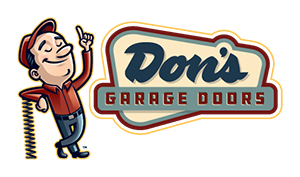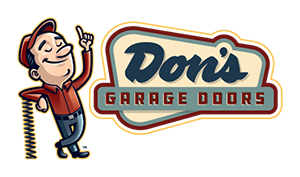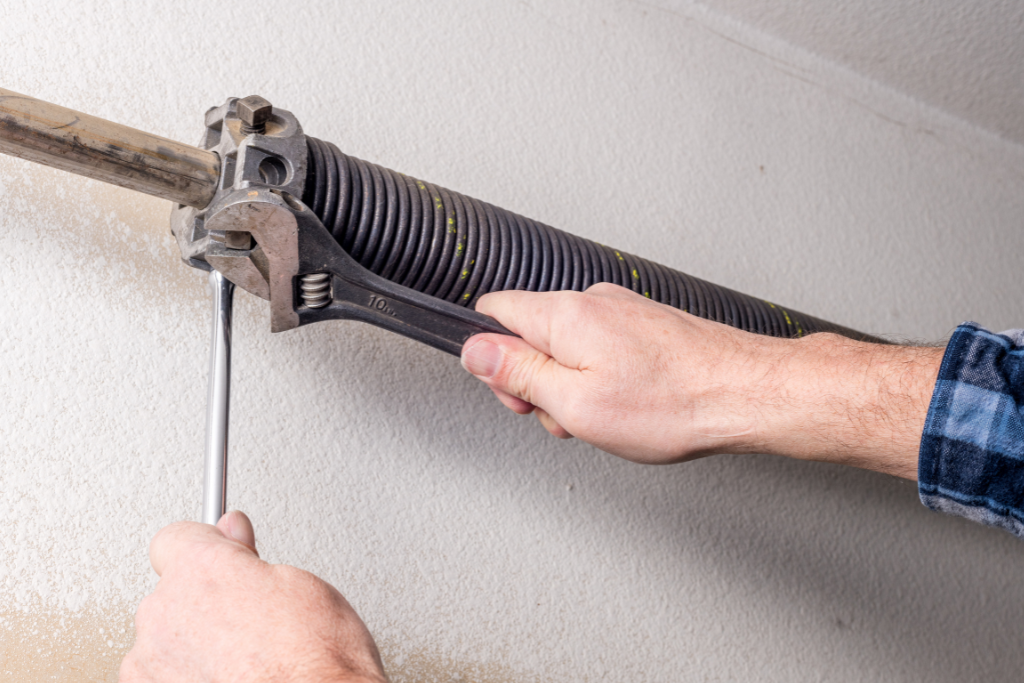Garage door springs are designed to handle the weight of the door, allowing it to lift and lower smoothly. Over time, however, these springs can break due to various factors. Understanding what causes a broken spring can help you better maintain your garage door system and prevent unexpected repairs. Here’s an in-depth look at the key causes of broken garage door springs.
Metal Fatigue: The Primary Cause
One of the most common reasons for a broken garage door spring is metal fatigue. Over time, the metal in the spring will wear down from the repeated stress of the opening and closing cycles. Each time the door opens and closes, the spring winds and unwinds, putting pressure on the metal. The more frequently the door is used, the faster the spring will wear out.
Garage door springs are rated for a specific number of cycles—usually around 10,000 cycles for standard springs. For a typical home, this usually translates to 5 to 7 years of use, depending on the frequency of operation. When the spring exceeds its cycle count, it becomes weaker and eventually snaps.
Lack of Maintenance: The Silent Culprit
Regular maintenance plays a significant role in extending the lifespan of your garage door springs. Over time, if the springs are not properly lubricated or maintained, friction builds up, causing the metal to wear out faster. When friction occurs, the spring is forced to work harder to support the door’s weight, which accelerates the breakdown of the material.
Lubricating the springs annually can help reduce friction and maintain their functionality. Neglecting this simple task can lead to premature wear and eventual failure of the spring. Therefore, it’s essential to have a technician inspect and lubricate the system regularly to avoid spring failure.
Extreme Temperature Fluctuations
Another major factor in the breakdown of garage door springs is extreme temperature fluctuations. As temperatures drop during the winter or rise in the summer, metal contracts and expands. This repeated expansion and contraction can weaken the spring over time, leading to a break.
Cold weather can be particularly harsh on garage door springs. When temperatures plummet, the metal in the spring contracts, making it more brittle and susceptible to snapping. On the other hand, hot weather can cause the metal to expand, which can also place additional strain on the spring.
Poor Installation or Improperly Sized Springs
Incorrect installation or the use of improperly sized springs can contribute to premature spring failure. If the springs are not correctly balanced or installed with the appropriate tension, they will be unable to handle the door’s weight. This can cause uneven wear and tear on the springs, leading to faster breakdowns.
It’s also essential to ensure the springs are the right size for your garage door. A spring that’s too small or weak for the door’s weight will experience more stress and wear out quickly. A professional technician will ensure that the right spring is chosen based on the door’s weight and size, helping to avoid premature spring failure.
Overuse or Heavy Usage
Garage doors that are used more frequently are more likely to experience broken springs. Overuse or excessive usage can wear down the springs more quickly than usual. If you use your garage door multiple times a day, or if you have a door that is used for commercial purposes, the springs will reach their cycle limit much more quickly.
For homes with high-traffic garages or businesses that frequently operate their doors, it’s crucial to opt for higher-quality springs that can withstand more cycles and last longer. Investing in premium-grade springs may have a higher upfront cost, but they can withstand more use and save money on repairs in the long run.
Rust and Corrosion
Rust and corrosion are major contributors to broken garage door springs. Over time, moisture can get trapped on the springs, especially if they’re exposed to outdoor elements. This moisture can cause the metal to rust, weakening the spring and potentially leading to sudden breakage.
One way to prevent rust is by ensuring that the springs are kept dry. If your garage is exposed to high humidity or if there’s an issue with the garage door sealing properly, moisture could seep in and start to corrode the springs. Regular inspection of your springs can help identify any signs of rust or corrosion before they cause a failure.
Overloaded Garage Door
An overloaded garage door can place unnecessary stress on the springs. If the door has accumulated too much weight over time—whether from added insulation, extra panels, or stored items—this added weight can cause the springs to wear out faster.
Garage door springs are designed to lift a specific amount of weight, and exceeding that weight limit can cause the springs to fail prematurely. It’s essential to ensure that the door is properly balanced and not overloaded, especially when making modifications to the door, such as adding insulation or changing panels.
Worn-out Cables and Other Parts
While springs are the primary culprit, other components of your garage door system, like cables and rollers, can also contribute to spring failure. If the wires or different components are worn out or damaged, they can cause uneven wear on the springs, thereby increasing the stress on them. This can eventually lead to the springs breaking.
A comprehensive inspection of the entire system is essential, as worn-out cables or rollers can quickly lead to spring failure. When replacing springs, it’s also a good idea to check other components and replace them as needed to ensure the entire system operates smoothly.
How Often Do Springs Break on Garage Doors?
Garage door springs usually fail from simple fatigue, not bad luck, and the timing depends on how often the door cycles. A standard residential torsion spring is commonly rated for about 10,000 cycles, which means one full open and close equals one cycle. If your household averages two cycles per day, that rating translates to approximately 13 years. At four cycles per day, it is closer to 7 years. Heavy doors, poor balance, skipped lubrication, extreme temperatures, coastal humidity, and road salt can all shorten that life. Choosing high-cycle springs rated for 20,000 to 50,000 cycles, keeping the door properly balanced, and lubricating the coils and bearings periodically can extend the timeline. Since fatigue cracks usually grow unnoticed until a sudden break, replacement is best done proactively when the door goes out of balance or the springs reach their rated life, and always by a qualified technician.
What Is a Helical Torsion Spring?
A helical torsion spring is a coil of wire designed to work in rotation rather than compression or extension. When one or both of its “legs” are twisted around the coil axis, the coils wind tighter, the wire resists that twist, and the spring stores energy as torque, then pushes the parts back toward their starting position. The legs act as levers that attach to the mating parts, so geometry and mounting are critical. Key specifications include wire and coil diameter, number of coils, leg length and angle, wind direction, and material, with the spring rate expressed in torque per degree or radian. You will find helical torsion springs in hinges, clothespins, latches, and garage door counterbalance systems, typically mounted on a shaft with a set amount of preload and enough clearance to avoid coil bind.
How to Tell if a Garage Door Spring Is About to Break and How to Prevent It from Happening
To prevent garage door springs from breaking prematurely, regular maintenance is key. Here are some tips to help prolong the life of your garage door springs:
- Lubricate the springs at least once a year to reduce friction.
- Inspect the system regularly for any signs of wear, rust, or damage.
- Avoid overloading the door with too much weight.
- Ensure the door is appropriately balanced and the springs are correctly installed.
- Consider upgrading to high-quality springs for better durability.
By understanding the causes of broken garage door springs and taking the necessary steps to maintain them, you can avoid costly repairs and ensure your garage door operates smoothly for years to come.


